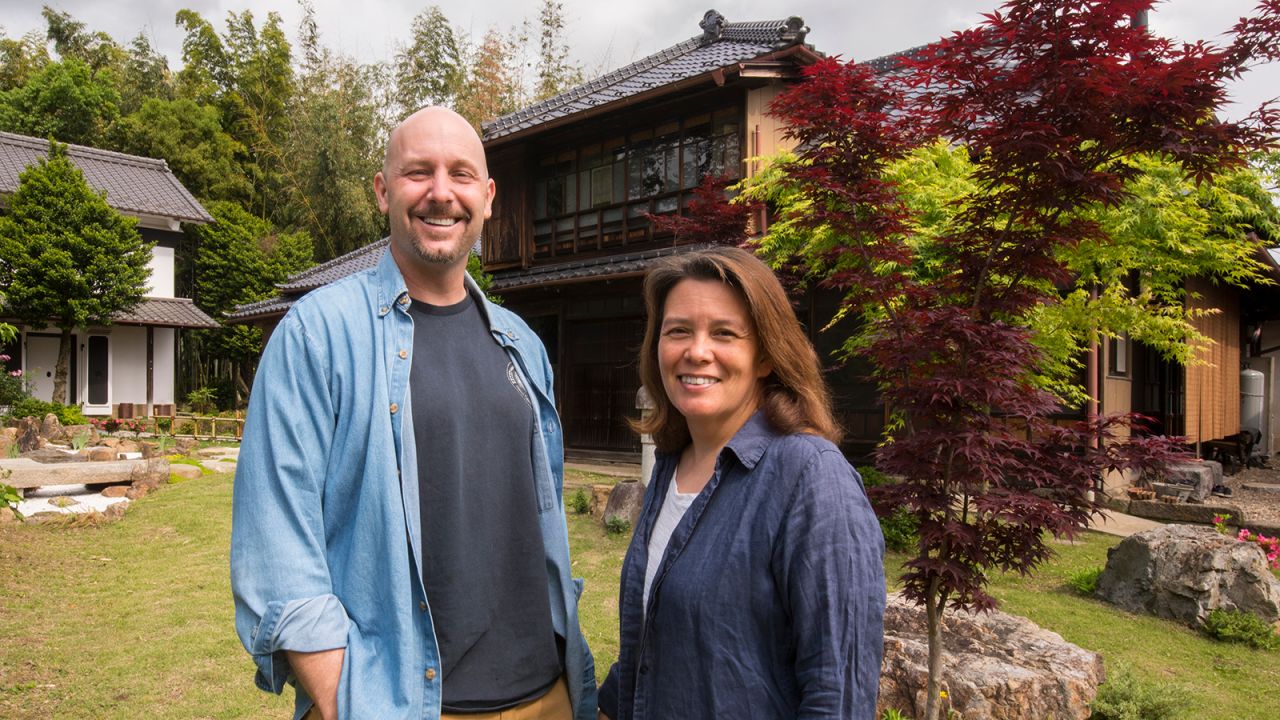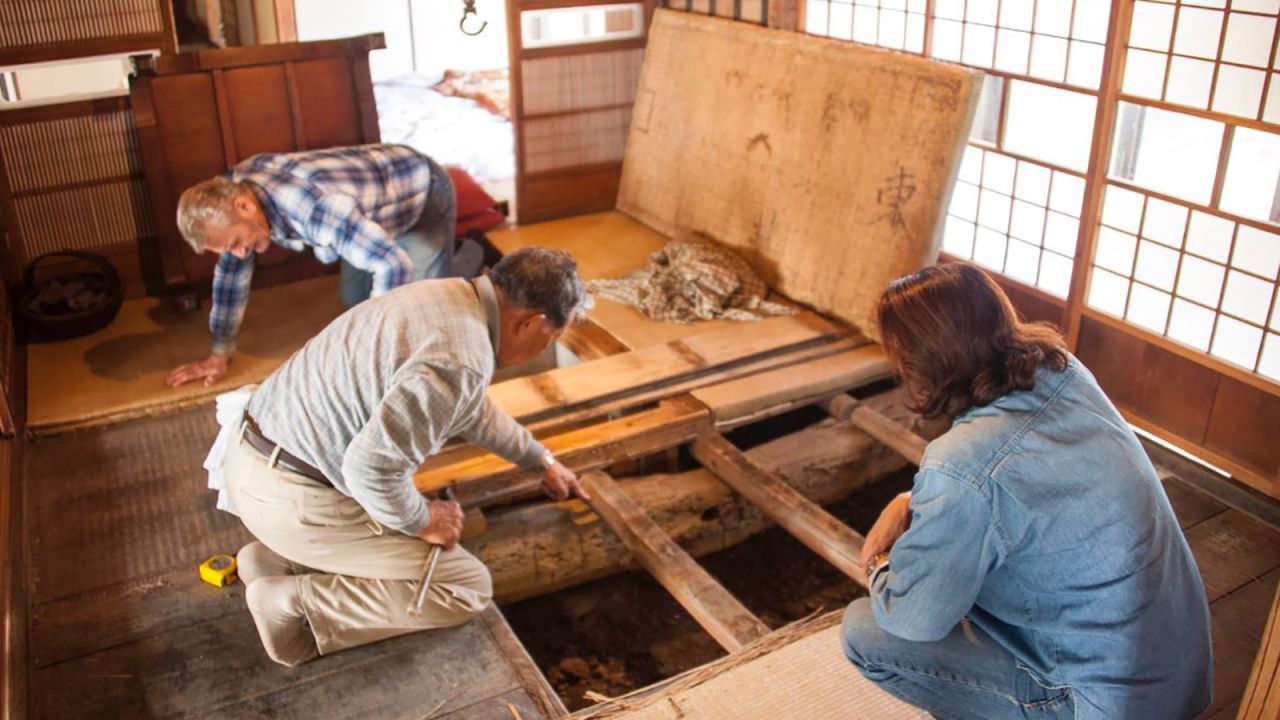
Kimberly and Paul Fradale were American expatriates living and working in Tokyo, where they discovered an opportunity many dream of: buying a traditional Japanese country house at an unbelievably affordable price. Little did they know that their purchase would take them on an extraordinary adventure, far exceeding their expectations.
Finding the Hidden Gem:
 In a country known for its exorbitant real estate prices, the Fradales stumbled upon an exceptional deal. Japanese country houses, known as "kominka," were still within reach, offering spacious properties at surprisingly low costs. The couple realized that, for as little as $20,000 USD, they could acquire a charming home in the countryside.
In a country known for its exorbitant real estate prices, the Fradales stumbled upon an exceptional deal. Japanese country houses, known as "kominka," were still within reach, offering spacious properties at surprisingly low costs. The couple realized that, for as little as $20,000 USD, they could acquire a charming home in the countryside.
While young Japanese people often overlook old houses located far from the city, Kimberly and Paul had a different perspective. They appreciated the endurance and historical significance of these grand farmhouses, built to shelter generations of families. The Fradales were determined to restore the neglected beauty they had found.
The Charming Challenges:
Restoring an old house came with its fair share of challenges. The Fradales knew that traditional Japanese houses, while spacious, lacked privacy due to their paper doors and walls. Additionally, these homes could be chilly, even with the addition of a wood stove. However, the couple embraced these quirks, fully immersing themselves in the cultural experience.
The House Hunting Adventure:
For years, the Fradales tirelessly scoured real estate listings, carefully selecting properties that met their criteria. Paul had a wish list featuring elements like proximity to a river, a nearby temple, and a mature garden. Kimberly, on the other hand, simply desired basic amenities such as running water, electricity, and plumbing.
After viewing over 30 homes in person, they finally stumbled upon their dream "kominka." Paul's excitement was palpable as he explored the house, discovering hidden treasures like a unique chest of drawers that doubled as stairs and remarkable sliding doors made from solid elm. The Fradales learned that the previous owner had received an offer from a developer to demolish the house and construct several smaller ones. However, they were determined to preserve its rich history and be the ones to breathe new life into the property.
A Journey Filled with Surprises:
The Fradales' adventure truly began when they acquired the house, which came with all its contents. What awaited them was a treasure hunt through a century's worth of history. Among the surprises were flattened candy wrappers, rare photos and postcards from World War II, and even a chest of drawers containing vintage kimonos. They came across artifacts that shed light on the war period, including a clock made in Nazi Germany and newspapers featuring stories of General Tojo.
Respecting the Past:
The Fradales approached their newfound collection with sensitivity and a desire to honor history. They shared some items with their community, using them to educate Paul's history students. They contemplated returning some artifacts to the owner or donating them to a historical society. They even entertained the idea of creating a mini-museum within their home to showcase Japan's early 20th-century history as seen through the lens of one family.
A Welcoming Community:
 The Fradales' efforts did not go unnoticed by their neighbors, who were mainly retirees in their 70s. The couple's dedication to restoring the house and the garden earned them the warm embrace of their community. Neighbors offered stones, plants, and even a 100-year-old fern and a bonsai tree to enhance their surroundings. In return, the Fradales shared the bamboo they removed from their yard, a delicacy in Japan, which further solidified their bond.
The Fradales' efforts did not go unnoticed by their neighbors, who were mainly retirees in their 70s. The couple's dedication to restoring the house and the garden earned them the warm embrace of their community. Neighbors offered stones, plants, and even a 100-year-old fern and a bonsai tree to enhance their surroundings. In return, the Fradales shared the bamboo they removed from their yard, a delicacy in Japan, which further solidified their bond.
Preserving Tradition:
Kimberly and Paul believed that restoring countryside homes and embracing traditional folk arts and crafts could pave the way for a more sustainable future, not just in Japan but worldwide. They recognized that Japan's reputation for quality craftsmanship extended beyond their own home. From handmade paper umbrellas to hammered copper tea pots, lacquered chopsticks, and quality tatami mats, each item exemplified meticulous care, respect for materials, and longevity.
Finding Beauty in Challenging Times:
Amid the global pandemic, the Fradales' country retreat became an oasis of solace and hope. As they practiced self-isolation, their home and the surrounding property offered them comfort and a sense of optimism. From the enchanting songs of frogs in the evening to the blooming of hydrangeas, nature's resilience provided a much-needed respite. The Fradales knew without a doubt that purchasing their country house was the right decision.
A Heartfelt Recommendation:
Reflecting on their journey, Paul wholeheartedly encouraged others to step out of their comfort zones, immerse themselves in a new culture, and take on the challenge of restoring historic homes. He acknowledged the strenuous labor involved but emphasized the immense reward it brings. As the world grapples with finding sustainable solutions, the Fradales believed that preserving cultural heritage and embracing traditional craftsmanship could be a way forward.
In Conclusion:
Kimberly and Paul Fradale's pursuit of their dream Japanese country house led them on an extraordinary adventure. They defied the notion of disposable houses, choosing to restore an old farmhouse with deep respect for its history and enduring beauty. Along the way, they discovered hidden treasures, forged bonds with their welcoming neighbors, and found solace in the timeless rhythms of nature. Their journey serves as a testament to the transformative power of embracing tradition and preserving cultural heritage in a rapidly changing world.






